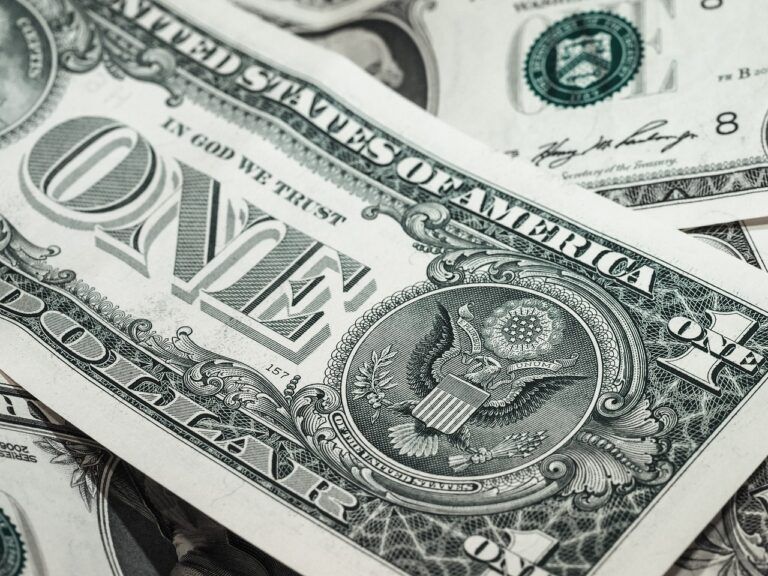The US Dollar System is a complex network of institutions, regulators, and mechanisms that work together to maintain the stability and functionality of the world’s primary reserve currency. An impressive, recently-created, infographic by Sam Baker, a Research Analyst at Bitcoin startup River offers an enlightening look into this intricate system.
Let’s break it down section by section.
The Big Picture
The infographic is divided into several key areas:
- International Regulators & Supranationals
- Domestic Regulators
- US Government Entities
- The Federal Reserve
- Offshore Eurodollar System
- Onshore Investors
- Banks and Depository Institutions
- Payments & Settlement
- Dollar Status Around the World
International Regulators & Supranationals
At the top of the infographic, we see various international bodies that play a role in global financial regulation. These include:
- Group of 20 (G20)
- Financial Stability Board (FSB)
- International Monetary Fund (IMF)
- Bank for International Settlements (BIS)
These organizations work to ensure global financial stability and cooperation between nations.
Domestic Regulators
The US has its own set of regulatory bodies overseeing different aspects of the financial system:
- National Futures Association (NFA)
- Municipal Securities Rulemaking Board (MSRB)
- Financial Industry Regulatory Authority (FINRA)
- Commodity Futures Trading Commission (CFTC)
- Securities and Exchange Commission (SEC)
These agencies regulate various financial markets and products within the United States.
US Government Entities
Several government entities play crucial roles in the US Dollar System:
- US Treasury Department
- Internal Revenue Service (IRS)
- Government Sponsored Enterprises (like Fannie Mae and Freddie Mac)
The Treasury, in particular, is central to the issuance and management of US government debt.
The Federal Reserve
At the heart of the system is the Federal Reserve, the United States’ central bank. The infographic shows its complex structure, including:
- Board of Governors
- Federal Open Market Committee (FOMC)
- 12 Regional Federal Reserve Banks
The Fed’s balance sheet, showing assets and liabilities, is also represented, highlighting its role in monetary policy.
Offshore Eurodollar System
This section illustrates the international aspect of the US dollar, showing how it’s used in offshore banking systems and foreign exchange markets.
Onshore Investors
Various types of domestic investors are shown, including:
- Pension Funds
- Insurance Companies
- Mutual Funds
- Hedge Funds
These entities play a significant role in the demand for and circulation of US dollars.
Banks and Depository Institutions
The infographic shows how commercial banks and other depository institutions fit into the system, acting as intermediaries between the Fed, investors, and the general public.
Payments & Settlement
This section illustrates the complex web of payment and settlement systems that facilitate the movement of money, including:
- ACH (Automated Clearing House)
- Wire Transfers
- Credit Card Networks
Dollar Status Around the World
A world map at the bottom of the infographic shows the global status of the US dollar, categorizing countries into:
- Official Currency (e.g., United States)
- Fixed Peg with USD (e.g., Saudi Arabia)
- De Facto Currency (e.g., Panama)
- Unofficial Currency (e.g., Cambodia)
This visual representation emphasizes the dollar’s global reach and importance.
Tying It All Together: The Interconnected US Dollar Ecosystem
The US Dollar System, as illustrated in River’s infographic, is a complex, interconnected network that spans global and domestic spheres. Let’s explore how these various components work together to maintain the dollar’s position as the world’s primary reserve currency.
At the top of the system, international regulators and supranationals like the G20, IMF, and BIS set the stage for global financial cooperation. They work in tandem with domestic regulators such as the SEC and CFTC to ensure stability and oversight across borders. This regulatory framework provides the foundation upon which the rest of the system operates.
The US government entities, particularly the Treasury Department, play a crucial role in managing the country’s finances and issuing debt. This debt, in the form of Treasury securities, is a key component of the global financial system, considered one of the safest investments worldwide.
At the heart of this system lies the Federal Reserve, the US central bank. The Fed’s monetary policies, including setting interest rates and managing the money supply, have far-reaching effects. These policies influence not only domestic financial conditions but also global markets due to the dollar’s international status.
The Fed’s actions ripple through the banking system, affecting both onshore and offshore dollar markets. Commercial banks act as intermediaries, channeling funds between the Fed, investors, and the general public. Meanwhile, the offshore Eurodollar system extends the dollar’s reach globally, facilitating international trade and investment.
Various types of investors, from pension funds to hedge funds, interact with this system, their activities influencing and being influenced by dollar dynamics. Their demand for dollar-denominated assets helps maintain the currency’s strength and liquidity.
The payments and settlement systems form the operational backbone of this ecosystem. They enable the smooth flow of funds across various entities, from large institutional transfers to everyday consumer transactions.
All of these components contribute to the dollar’s global status, as visualized in the world map. The widespread use of the dollar – whether as an official currency, a peg, or an unofficial medium of exchange – reinforces its importance in the global economy.
This interconnected system demonstrates why the US dollar remains central to global finance. Changes in any part of this ecosystem can have far-reaching consequences, affecting everything from international trade to domestic economic policy. Understanding these connections is crucial for grasping the complexities of global finance and the unique role of the US dollar within it.
Featured Image via Pixabay









